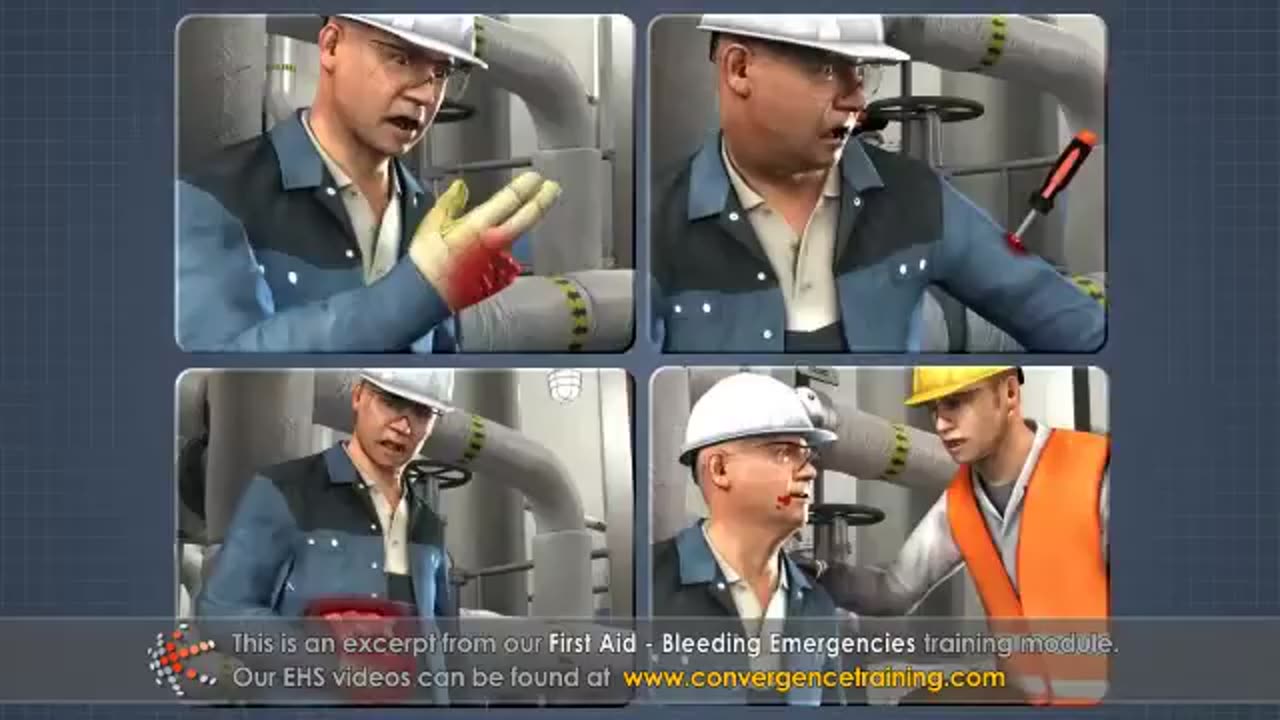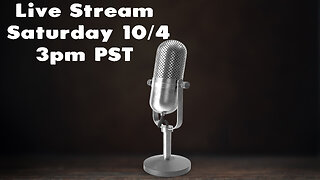Premium Only Content

First Aid - Bleeding Emergencies Training
**First Aid Training for Bleeding Emergencies** is a vital skill to help stabilize a person and prevent life-threatening blood loss. Below is a structured guide to train individuals on recognizing, assessing, and treating various types of bleeding.
---
## **1. Introduction to Bleeding Emergencies**
- **What Is Bleeding?**
- Loss of blood from veins, arteries, or capillaries due to injury.
- Categories:
- **External bleeding**: Blood exits the body through wounds.
- **Internal bleeding**: Blood loss inside the body, not visible.
- **Why Immediate Action Is Crucial?**
- Severe blood loss can lead to shock, organ failure, or death.
- Rapid intervention can stabilize the victim until professional help arrives.
---
## **2. Types of Bleeding**
1. **Arterial Bleeding**:
- Bright red, spurting blood (due to high pressure).
- Most severe and requires urgent care.
2. **Venous Bleeding**:
- Dark red, steady flow of blood.
- Can also be serious but less urgent than arterial bleeding.
3. **Capillary Bleeding**:
- Oozing blood from minor cuts or abrasions.
- Typically not life-threatening.
---
## **3. Recognizing Signs of Severe Blood Loss**
- Pale, cold, or clammy skin.
- Rapid heartbeat and weak pulse.
- Dizziness, confusion, or loss of consciousness.
- Rapid breathing.
- Visible pooling or spurting of blood.
---
## **4. Immediate First Aid Response**
### **A. Stop the Bleeding**
1. **Apply Direct Pressure**:
- Use a sterile cloth, gauze, or the cleanest available material.
- Apply firm pressure directly over the wound.
2. **Elevate the Wounded Area**:
- Raise the injured limb above heart level (if no broken bones are suspected) to reduce blood flow.
3. **Apply a Pressure Bandage**:
- Secure the dressing with a bandage while maintaining pressure.
4. **Use a Tourniquet (for severe arterial bleeding)**:
- Place it 2–3 inches above the wound.
- Tighten until the bleeding stops.
- Record the time it was applied; prolonged use can cause tissue damage.
---
### **B. Treat for Shock**
- Lay the victim flat on their back.
- Cover them with a blanket to maintain body temperature.
- Keep their head slightly lower than the chest to promote blood flow to vital organs.
---
### **C. Do Not:**
- Remove embedded objects. Instead, apply pressure around the object and stabilize it.
- Remove blood-soaked dressings. Add layers of gauze over them.
---
## **5. Specific Scenarios**
1. **Nosebleeds**:
- Sit the person upright, leaning slightly forward.
- Pinch the nostrils for 10–15 minutes.
- Avoid tilting the head backward to prevent swallowing blood.
2. **Head Wounds**:
- Apply pressure around the wound, avoiding pressing directly on fractures.
- Watch for signs of skull fractures (e.g., clear fluid or blood from ears/nose).
3. **Internal Bleeding (Suspected)**:
- Symptoms: Bruising, swelling, or tenderness; signs of shock.
- Keep the victim still and calm.
- Call emergency services immediately.
4. **Amputations**:
- Control bleeding using a tourniquet if necessary.
- Save the severed part in a clean, moist cloth, place it in a sealed plastic bag, and keep it cool (do not freeze).
---
## **6. Personal Safety for the Responder**
- **Use Personal Protective Equipment (PPE)**:
- Wear gloves, if available, to avoid contact with bloodborne pathogens.
- **Avoid Direct Contact**:
- Use a barrier, such as plastic wrap or a clean cloth, if gloves aren’t available.
---
## **7. Calling Emergency Services**
- Provide the following information:
- Location and type of injury.
- Amount of blood loss and condition of the victim.
- Actions taken so far.
---
## **8. Aftercare and Monitoring**
- Check for continued bleeding and signs of infection:
- Redness, swelling, warmth, or pus around the wound.
- Fever or increased pain.
- Ensure the victim gets tetanus shots if necessary.
---
## **9. Training Exercises**
- **Simulated Scenarios**:
- Role-play different bleeding emergencies (e.g., limb injury, nosebleed, amputation).
- Practice applying direct pressure, bandages, and tourniquets.
- **Equipment Familiarization**:
- Practice with first aid kits, including dressings, gauze, and tourniquets.
---
## **10. Summary and Key Points**
- Act quickly to control bleeding.
- Use direct pressure, elevation, and bandages.
- Apply a tourniquet only as a last resort.
- Treat for shock and monitor the victim until professional help arrives.
---
### **Would you like additional visual materials, such as diagrams of proper techniques, or a printable checklist for first responders?**
-
 20:24
20:24
HSESafetyInformation
7 months agoKABULI PULAO RECIPE - Original 40+ KG Afghani Meat Pulau Prepared - Street Food Qabili Plav Recipe_2
35 -
 1:13:19
1:13:19
iCkEdMeL
3 hours ago $7.34 earnedChaos Explodes in Chicago & Portland | Feds Clash with Protesters!
26.7K5 -
 21:54
21:54
Exploring With Nug
1 day ago $7.53 earnedScuba Diving Missing Person Search Leads to Discovery of Classic Cars!
49.5K8 -
 LIVE
LIVE
Phyxicx
8 hours agoStar Wars: Movie Battles II Community Event hosted by ReaperAF95 - 10/4/2025
130 watching -
 1:19:51
1:19:51
World2Briggs
6 hours ago $2.14 earnedThe US This Week
29.2K2 -
 2:31:13
2:31:13
Joker Effect
3 hours ago"MAKE STREAMING GREAT AGAIN" - Brands Step Up Finally. Birth of Rumble Community. Taking Leadership
16.6K1 -
 5:02:17
5:02:17
Illyes Jr Gaming
7 hours ago"Machine Gun" Takes On BLACK OPS 7 Beta DAY 3!!!
10.7K -
 2:57:29
2:57:29
Damysus Gaming
4 hours agoBorderlands 4 - AMON Vs Timekeeper!! Lets Grind This OUT!!
9.88K -
 3:10:06
3:10:06
Nikko Ortiz
10 hours agoHAMAS Gaza Peace Deal And MORE.... Brutally Honest EP #17 | Rumble LIVE
115K62 -
 25:10
25:10
MYLUNCHBREAK CHANNEL PAGE
10 hours agoIstanbul Should NOT Exist - Pt 4
44.6K16
